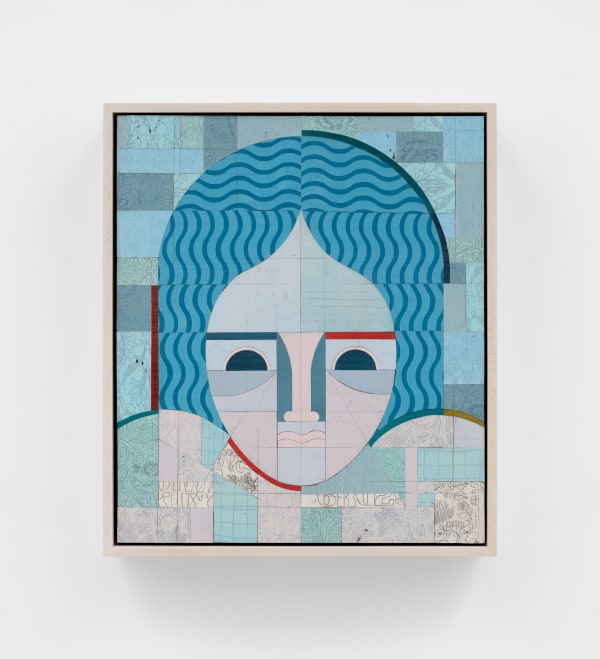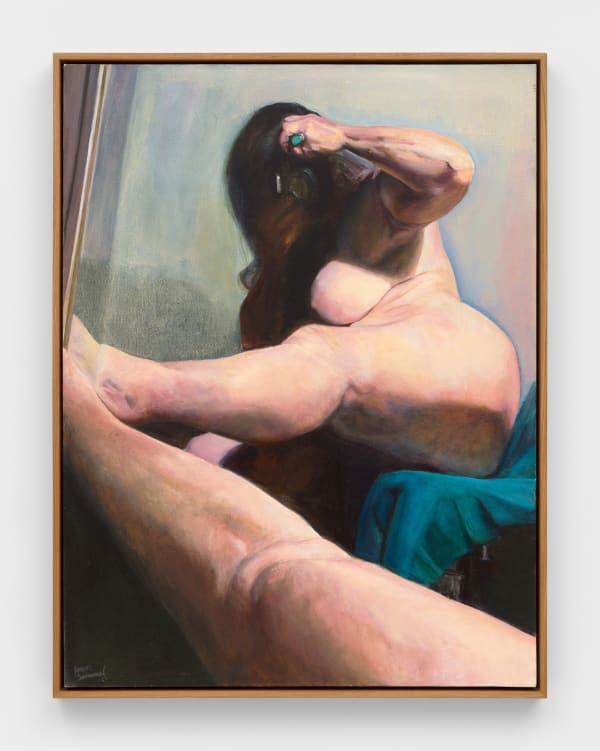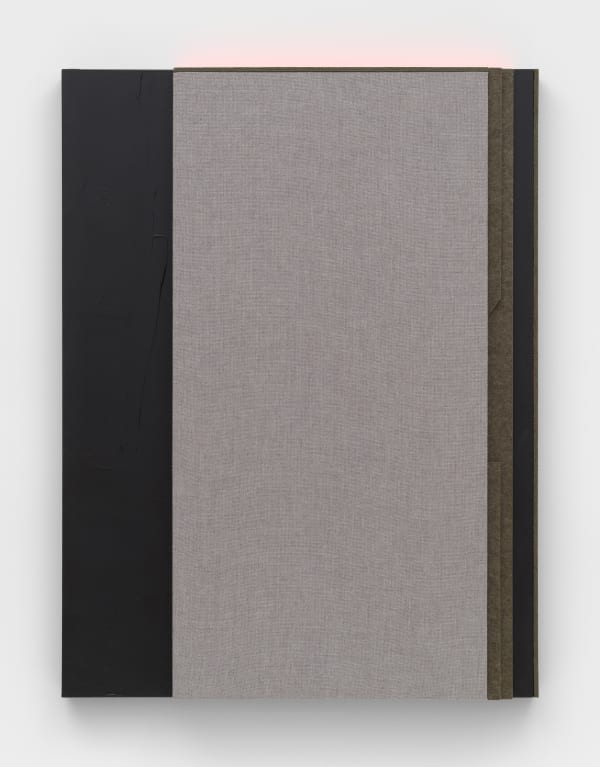Frieze Los Angeles 2025 | Booth B5
Preview (invitation-only): February 20, 2025
Public Days: February 21–23, 2025
Santa Monica Airport, 3233 Donald Douglas Loop S, California
Alexander Gray Associates presents a selection of new paintings and works on paper by Ruby Sky Stiler, alongside works by Bethany Collins, Harmony Hammond, Jennie C. Jones, Kang Seung Lee, Steve Locke, Carrie Moyer, Joan Semmel, and Jack Whitten.
Anchoring the presentation are Ruby Sky Stiler’s multidimensional relief paintings, including Woman with Children in Blue (2024) and Two Women in Sienna and Umber, with Red Outline (2024). Stiler’s richly textured canvases reimagine dominant languages of twentieth century abstraction using layered tiles that playfully rupture the modernist grid. Imbued with the artist’s distinctive feminist values and insights, stylized female figures and children emerge between fractured planes. With relief paintings like Artist with Green Palette (2024), Stiler further challenges the art historical dichotomy between, in her words, “woman as subject of painting versus creator of image.” As in her paintings, Stiler’s ongoing series of Book Weavings fuse preexisting visual materials from a multitude of sources to speak to our present moment.
Jennie C. Jones and Bethany Collins likewise use abstraction to uncover hidden histories. Both artists are featured in Alice Coltrane, Monument Eternal, on view at the Hammer Museum. Highlighting the perception of sound within the visual arts, Jones’s compositions like Nocturne, Earth Tone (2023) employ sound-dampening materials to create sonically “active” paintings that subvert the optical focus of Minimalism. Also turning to music, Collins’s Roses bloom on every side (2024) incorporates excerpts from alternate versions of the famous anthem, The Battle Hymn of the Republic. Frenzied swirls of pastel unveil seemingly discordant phrases, visualizing how national narratives are reworked over time. Just as Collins uses language as a bridge between past and present, so too does Kang Seung Lee. Reflecting on queer histories rooted in Los Angeles, his multimedia assemblage Untitled (Hole) (2024) combines embroidery and mother-of-pearl with watercolor renderings of the trees at Elysian Park, a well-known cruising site.
Harmony Hammond and Carrie Moyer also merge formal concerns with queer content, approaching the canvas as a space where mark-making evokes embodied presence. Hammond’s punctured works on paper open-endedly allude to bodily orifices, and, she explains, “the possibility of tying down or connecting.” Meanwhile, Moyer’s playful compositions like The Sky Inside (2024) freely oscillate between abstraction and representation as fluid contours suggest anatomical, cosmic, and geological phenomena.
Like Moyer, Jack Whitten’s works reenvision the limits of gestural abstraction. For nearly half a century, his restless formal experimentation resulted in processes and techniques that transformed the nature of the painted image. Exploring the sculptural potential of acrylic, works like Compressed Space III (2015) capture, per Whitten, “the paradox of being caught between that which is static and what is moving.”
Approaching representation through similarly introspective methods, both Steve Locke and Joan Semmel create portraits informed by psychological encounters. Examining themes of male desire, vulnerability, and sexuality, Locke’s cruisers capture intimate—and potentially dangerous—moments between anonymous men. By contrast, Semmel’s self-portraits describe the artist’s “experience of femaleness.” Foregrounding Semmel’s use of photography as it relates to her process and subject matter, the artist’s With Camera series (2001–06) is highlighted in Ordinary People: Photorealism and the Work of Art Since 1968, on view at The Museum of Contemporary Art, Los Angeles. Taking her own aging body as subject, works from this series like Tilted Mirror (2002) challenge the objectification and fetishization of female sexuality.
Working across cultural and political spheres, the works in the Gallery’s presentation illuminate art’s expansive social function. As Stiler concludes, “My joy in making things comes from the desire to create something whole, or functional, out of parts … to repair and breathe life into something, like surgery or healing.”
Frieze Los Angeles: Booth B5
February 20 - 23, 2025






















